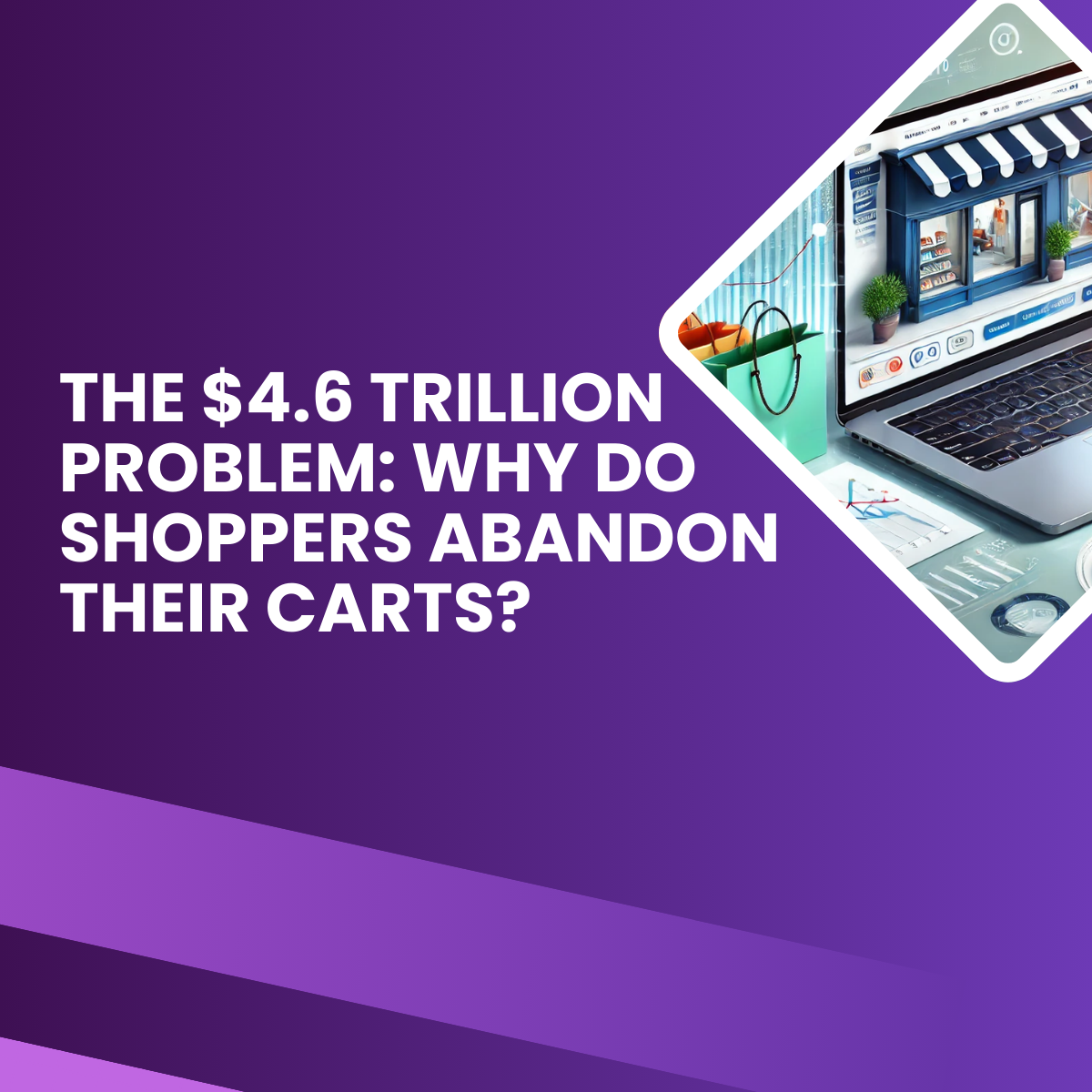Transforming Window Shoppers into Buyers: Behavioural Insights for E-Commerce Success

E-commerce businesses face a recurring challenge: turning curious visitors into paying customers. Despite advancements in technology, the global e-commerce conversion rate remains frustratingly low—just 2.35%. This means 98 out of every 100 visitors leave without buying anything, leaving massive potential revenue untapped.
So, what’s driving this disconnect? The reality is that traditional approaches, relying on intuition or guesswork, are no longer enough. To close the gap between interest and action, businesses need to embrace a data-driven approach, leveraging behavioural insights to understand and address the barriers that prevent conversions.
The $4.6 Trillion Problem: Why Shoppers Abandon Their Carts
Cart abandonment is one of the most persistent issues in online shopping. Studies show that almost 70% of online carts are abandoned, representing $4.6 trillion in unpurchased goods each year. For every 10 people visiting a site, only two complete their purchase.
But why? Here are the most common reasons:
Hidden Costs : Over 58% of shoppers abandon their carts when unexpected fees—like shipping or taxes—appear at checkout. This lack of pricing transparency erodes trust and creates friction.
Technical Glitches : A slow-loading page, an error message, or a crashed server is all it takes to lose a potential buyer. Research shows that users expect pages to load in under three seconds, and anything slower drives them to competitors.
Poorly Designed CTAs : Calls-to-action (CTAs) that are hard to find or unclear can confuse users. Whether it’s a “Buy Now” button buried at the bottom of the page or a misleading label, these small design flaws can lead to lost sales.
These challenges underline the importance of creating a seamless and intuitive shopping experience. A clearer understanding of user behaviour is essential to identifying and addressing the reasons why visitors disengage.
The Business Case for Optimizing Conversions
Improving conversion rates isn’t just about boosting sales—it’s about long-term growth. Even a modest 1% increase can have a significant impact. For a business generating $1 million annually, that’s $10,000 in additional revenue.
Here’s why conversion rate optimization matters :
Higher Customer Lifetime Value (CLV): Better conversions often lead to happier, more loyal customers. Research shows that improving conversion rates can increase CLV by as much as 30%, resulting in repeat business and stronger relationships.
Improved ROI on Paid Marketing: Every click counts. When more visitors convert, your marketing dollars work harder, making campaigns more cost-effective. Competitive Differentiation: In a crowded market, the brands that optimize their user experience win. A smooth, reliable shopping process builds trust and loyalty, helping you stand out.
By focusing on user experience and conversion optimization, businesses can unlock not just higher revenue but also long-term customer loyalty.
Who Are "Window Shoppers"?
“Window shoppers” are visitors who browse your site but stop short of making a purchase. They might add items to their carts, explore product categories, or click on CTAs, but they ultimately leave without converting.
Common behaviours of window shoppers include:
Browsing Without Buying : They explore product pages or categories but hesitate to take the next step. Often, they’re in the research phase or comparing options.
Cart Abandonment : They add items to their cart but fail to complete the checkout process, often due to hidden fees, a lack of trust, or a complicated form.
Engaging With CTAs Without Action : They click buttons like “Add to Cart” or “Learn More” but fail to follow through. This behaviour could signal poor CTA placement or unclear next steps.
Understanding these behaviours is the first step to converting these users into buyers.
Behavioural Insights : A Game-Changer in Conversion Optimization Behavioural analytics tools can uncover the subtle reasons why users disengage. Here’s how they help:
Rage Clicks : Repeated clicks on non-functional elements, such as broken links, signal user frustration. Fixing these issues can instantly improve the shopping experience.
Dead Clicks : When users click on buttons or areas that don’t trigger any action, it often points to poor CTA design or placement.
Session Replay : These tools let you watch real user interactions, revealing where shoppers hesitate or drop off in the purchasing journey. Heatmaps and path analysis tools also offer valuable insights by showing where users spend the most time and where they tend to leave. Armed with this data, businesses can make informed changes to their websites and address common friction points.
Practical Steps to Convert Window Shoppers Into Buyers
1. Simplify the Checkout Process
Streamline forms and reduce the number of steps to complete a purchase. Ideally, checkout should take no more than 3-4 steps. Offer guest checkout options to eliminate barriers for first-time buyers
2. Build Trust
Highlight trust signals, like secure payment badges, clear return policies, and customer reviews. Shoppers are more likely to complete a purchase if they feel confident about your site. Provide live chat support to address questions in real-time.
3. Personalize the Experience
Use data to recommend products based on browsing history or cart contents. Shoppers who see relevant recommendations are more likely to convert. Retarget cart abandoners with personalized email campaigns or ads offering discounts or free shipping.
4. Be Transparent With Costs
Display shipping fees, taxes, and other costs upfront. Surprising users with additional charges at checkout is a surefire way to lose them.
5. Optimize for Speed and Performance
Ensure your website loads quickly and functions smoothly across devices. Regularly test for and fix bugs, broken links, or server issues.
Conclusion: Turning Curiosity Into Commitment
The stakes in e-commerce are high, with nearly $4.6 trillion left on the table annually due to cart abandonment. But by focusing on behavioural insights and conversion optimization, businesses can reclaim a significant portion of this lost revenue.
It’s time to stop guessing why users leave and start addressing their pain points. Whether it’s simplifying your checkout process, improving site performance, or personalizing the shopping journey, small changes can lead to big results.
By investing in tools that track and analyze user behaviour, you can create an e-commerce experience that doesn’t just attract visitors—it turns them into loyal customers. Don’t leave conversions to chance. Start making data-driven changes today and watch your business grow.
Popular Blogs

Transforming Window Shoppers into Buyers: Behavioural Insights for E-Commerce Success
